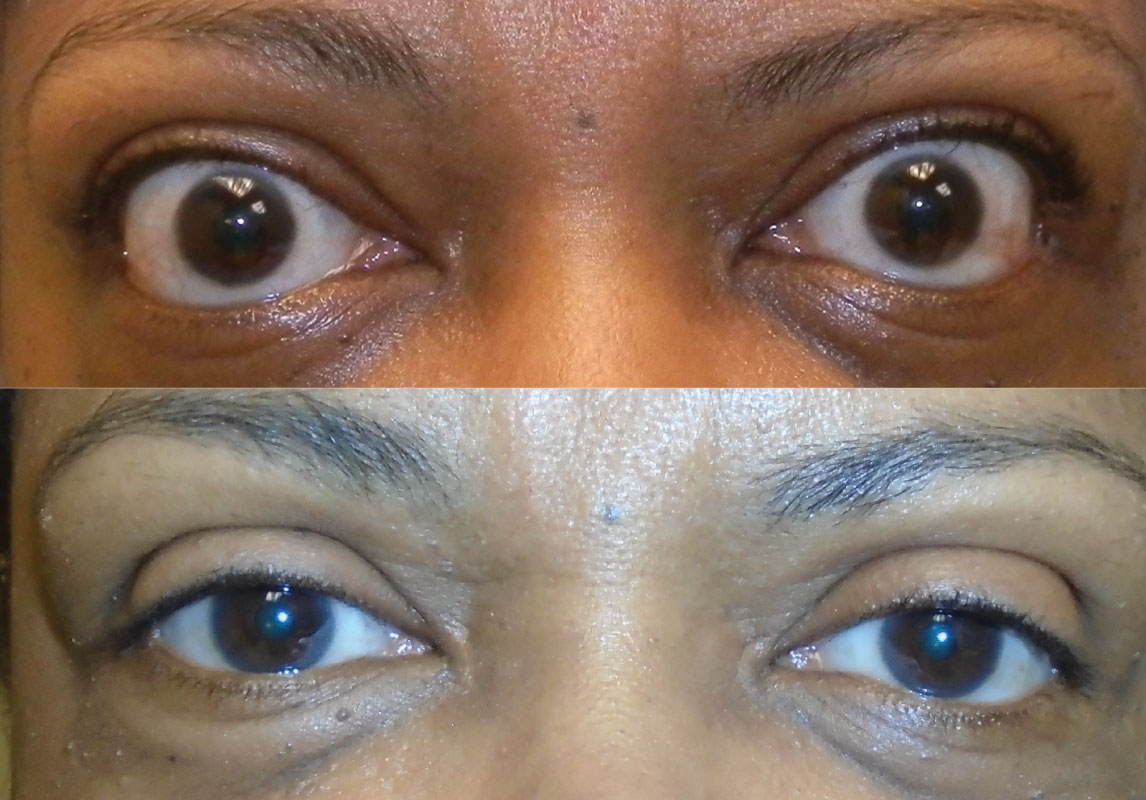 |
| Study shows baseline measures such as clinical activity score and right and left gaze horizontal prism deviation can help better predict how patients respond to teprotumumab. Photo: Bobby Saenz, OD. Click image to enlarge. |
Diplopia is a significant and life-altering effect of TED, a condition caused by inflammatory damage to the periocular tissue. With a few years’ experience with teprotumumab now available, researchers decided to gauge the effect of this treatment on objective ocular alignment measures. They found that most patients remained stable after treatment regarding ocular alignment in primary gaze.
The study included patients with TED aged 18 years or older who presented with diplopia and were treated with a standard six-month course of teprotumumab. The primary outcome was change in ocular alignment in primary gaze position, and secondary outcomes included change in ocular alignment in other gaze positions, proptosis, eyelid position and clinical activity score compared with baseline. To determine what factors may predict ocular alignment response to teprotumumab, researchers analyzed baseline characteristics among three groups: worse, stable or improved at six months. Worse patients had at least 5D of worsening in the horizontal plane or 3D of worsening in the vertical plane. “Improved” patients had at least 5D of improvement in the horizontal plane or 3D of improvement in the vertical plane. Anything in between was classified as “stable.”
Seventeen patients met inclusion criteria, three worsened, 10 were stable and four improved. Clinical activity score was significantly different among the groups and was higher in those who worsened and those who improved compared with those who remained stable. Right gaze horizontal prism deviation and left gaze horizontal prism deviation were significantly different among the groups, with a greater degree of left gaze horizontal prism deviation in the worse group than the stable group.
Most patients remained stable after teprotumumab regarding ocular alignment in primary gaze, and the number of individuals who improved was slightly higher than those who worsened. It was also demonstrated that there are some baseline measures that can help better predict how a patient will respond to teprotumumab—such as clinical activity score and right and left gaze horizontal prism deviation—but more importantly that “help to recognize and determine who will need additional treatment for diplopia after teprotumumab treatment,” according to the authors.
“These results suggest that those with more active disease at baseline are more likely to change one way or the other instead of remaining stable because the clinical activity treatment at baseline was higher in those who worsened and improved after teprotumumab treatment,” the authors explained in their article for Journal of Neuro-Ophthalmology. “In addition, those who start out with a greater degree of misalignment at baseline are also more likely to either show improvement or worsening as demonstrated by the right and left gaze horizontal prism deviation outcomes. These results further emphasize the idea that more active disease, and more specifically greater degrees of misalignment, at baseline suggests some sort of response to teprotumumab, rather than no response or change in disease course.”
The authors suggest that these results can better inform physicians of how to counsel patients with TED when considering teprotumumab therapy.
Mudalegundi S, Huang P, Henderson A, Carey A. Objective diplopia outcomes for patients treated with teprotumumab for thyroid eye disease. J Neuro-Ophthalmol. September 21, 2023. [Epub ahead of print.] |

